Capcom recently released the first making-of video for Kunitsu-Gami: Path of the Goddess on YouTube. The Japanese language documentary reveals how and why the development team behind Capcom’s new IP chose to combine real-life models and effects with CGI to create the game’s unique, mystical version of historical Japan. It surprisingly involves coffee grounds and mini fireworks.
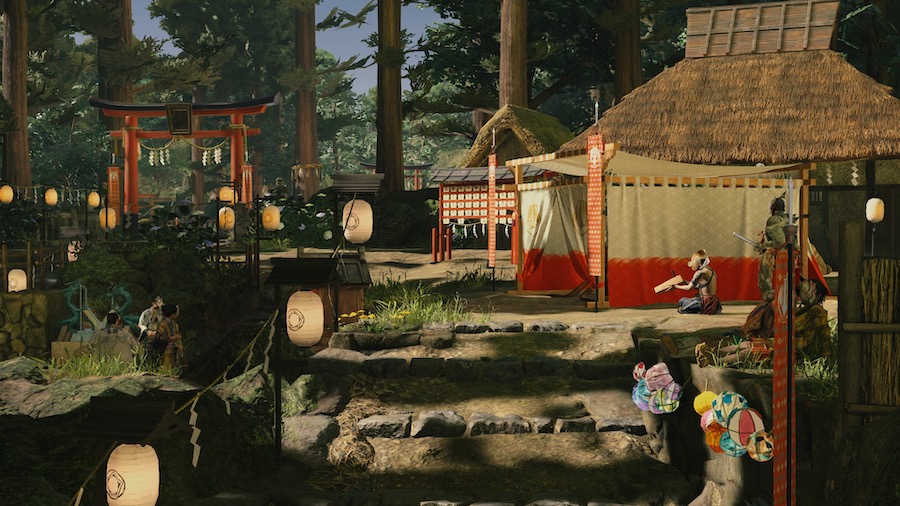
Like Capcom’s cult classic Okami, Kunitsu-Gami’s story heavily centers on Japan’s Shinto religion and mythological monsters (yokai). The game’s atmosphere and environments are a key part of this. The documentary, with commentary from director Shuichi Kawata, miniature designer Naoki Ishii and physical effects creator Hiroyuki Wada, shows the detailed physical models of buildings and settings that were created for the game, as well as the practical special effects (not to mention the traditional Japanese sweets). But why did the team go to so much trouble to create these aspects for a digital video game?
.
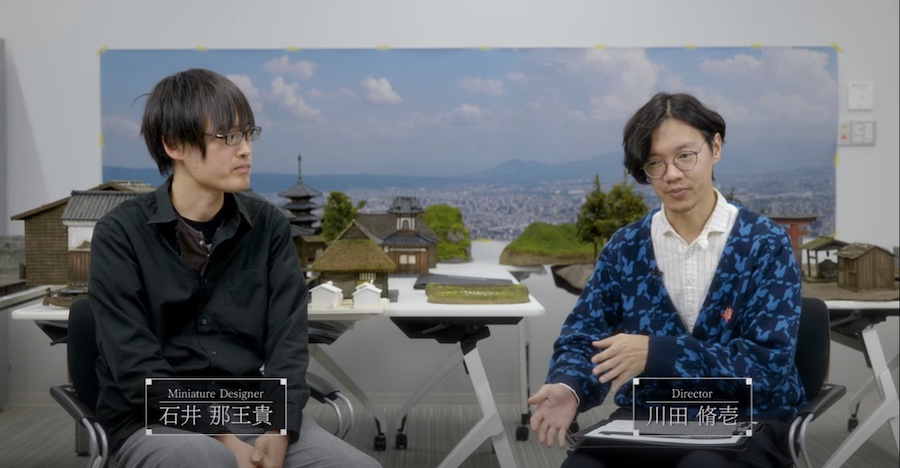
First of all, Kawata reveals that the decision to make detailed models of Japanese village buildings and then 3D scan them into the game is simply because “We want people to feel like they are playing the game while looking into a diorama.” This led them to focus on the game’s art design and resulted in the team using real miniatures to immerse the player in a unique world.
Those who have picked up Kunitsu-Gami will soon notice that instead of having a typical third-person camera angle that is directly behind the player’s character, the game opts for a more distant perspective, with the camera pulled out. This gives a detailed overview of the game’s lush environments and rustic houses. “With this kind of camera angle, the best or coolest set-up is to frame it like a TV screen, with the game characters moving around within a diorama.” Kawata explains. Another reason for Kunitsu-Gami’s choice of camera angle had to do with the game’s topic. “As it’s a story about a god, I designed it in a way that gives a bit of a god’s perspective.” Kawata previously revealed in an interview with Famitsu.

.
When it came to 3D scanning the dioramas into the game, Kawata made use of the team’s knowledge of what materials would scan easily, using CGI to make up for any missing details and smooth out any rough patches. The designer of the game’s miniatures, Naoki Ishii, comments that “Kawata also makes analogue 3D models himself, so it was very easy for us to share our views on the technical aspects,” with them often discussing what aspects of the dioramas would and wouldn’t work on screen. The hybrid approach allowed them to combine the best of both worlds- the fine detail of the real-life miniatures and CGI’s corrective ability.
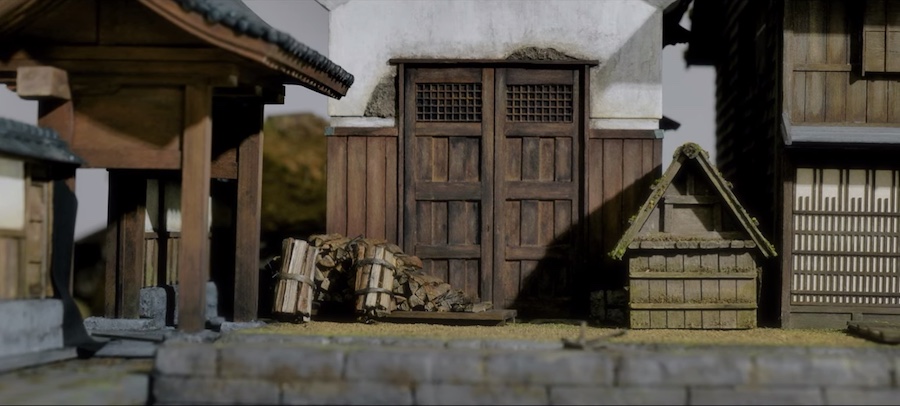
Wada reveals that the most difficult building to create was the shrine. With Kunitsu-Gami’s story being centered on the shrine maiden Yoshiro, her guardian Soh and their journey to purify a mountain, it is essential to the tale. “A regular shrine wouldn’t do, so I combined various elements inspired by shrines from all over Japan” Ishii explains. Including this research, it took around 3 months to create the full model of the shrine. He reveals that the textured roof was actually created using dried-out coffee grounds that were then glued together.
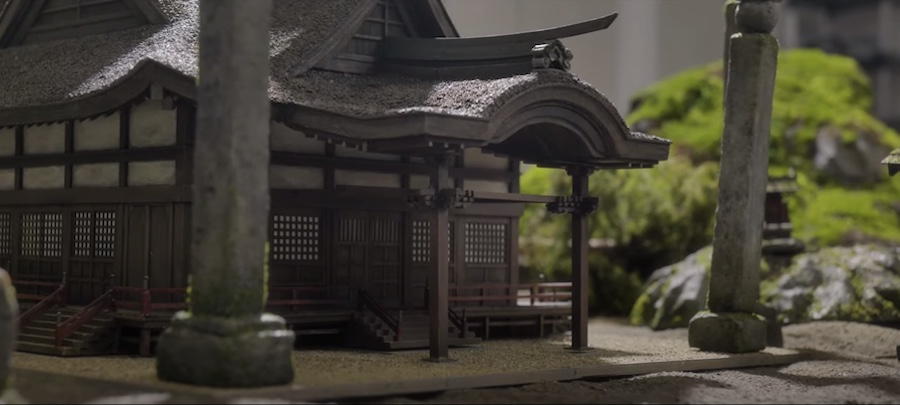
Below: The scanned digital model of the shrine’s main building.
(image credit: Capcom Channel)
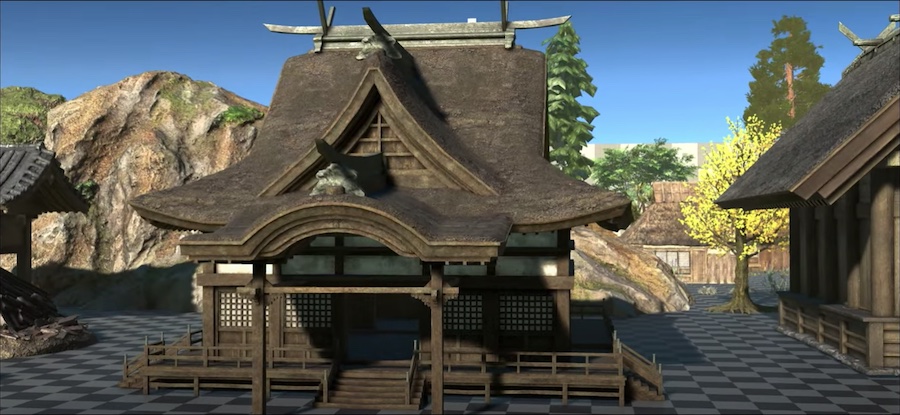
.
.
The creators conducted wide-ranging research throughout Japan because they wanted Kunitsu-Gami’s world to invoke a sense of typical landscapes familiar to anyone who has been to the Japanese countryside. However, they did not want it to feel like a particular real-life location.
For the special effects, Kawata mentions that the team really wanted to put strong emphasis on fireworks and sparks. The fireworks when you purify a shrine in the game, Soh’s flaming sword, and the sparkler traps you can lay for the game’s Seethe monsters were all created using practical special effects. Instead of simply filming regular fireworks, Kawata explained that “I asked the team to focus on calculating the design and movement etc. of the fireworks before trying to create them.” Kawata explains.

.
Used to creating flashy special effects for TV and film, physical effects director Wada explains that it was hard to create the more subtle effects to match the spirit of Kunitsu-Gami’s world, adding that it was extremely difficult to capture footage of small-scale fireworks within the confines of the studio. However, he adds that “it was really fun” working with the team to find ways to create the desired effects. Kawata explains that Wada was incredibly flexible in coming up with solutions to the team’s precise demands, stating that “we were impressed by the amount of extensive knowledge that he has in this field.”
Towards the end of the video, Ishii expresses hope that players will enjoy the unique new world that has been created in Kunitsu-Gami by combining the completely opposite elements of real-life special effects and miniatures with computer graphics. Kawata adds that “We live in a world where so many things are created using computers, so we wanted to bring a sense of reality, real sensations and excitement to this game.”
As an aside, Kunitsu-Gami is not the only recent game to utilize practical special effects. The directors of 2023’s Alan Wake 2 recently revealed why they opted to use such conventional methods.
Kunitsu-Gami: Path of the Goddess is available now on PC (Steam/Windows), PS4/PS5, Xbox One/Xbox Series X|S (including Xbox Game Pass).





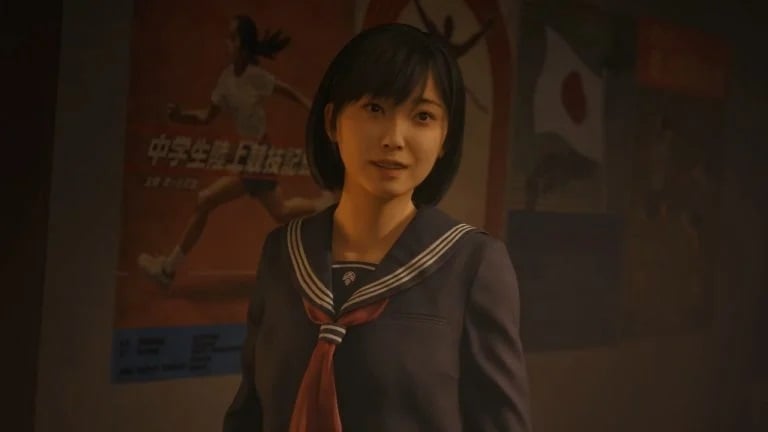
Their meticulous attention to detail makes this game stand out for me. The graphics are pleasing on the eye in so many ways. It is great that you can pan out to appreciate the depth of fine detail. So glad you first brought this game to my attention in your article last month.